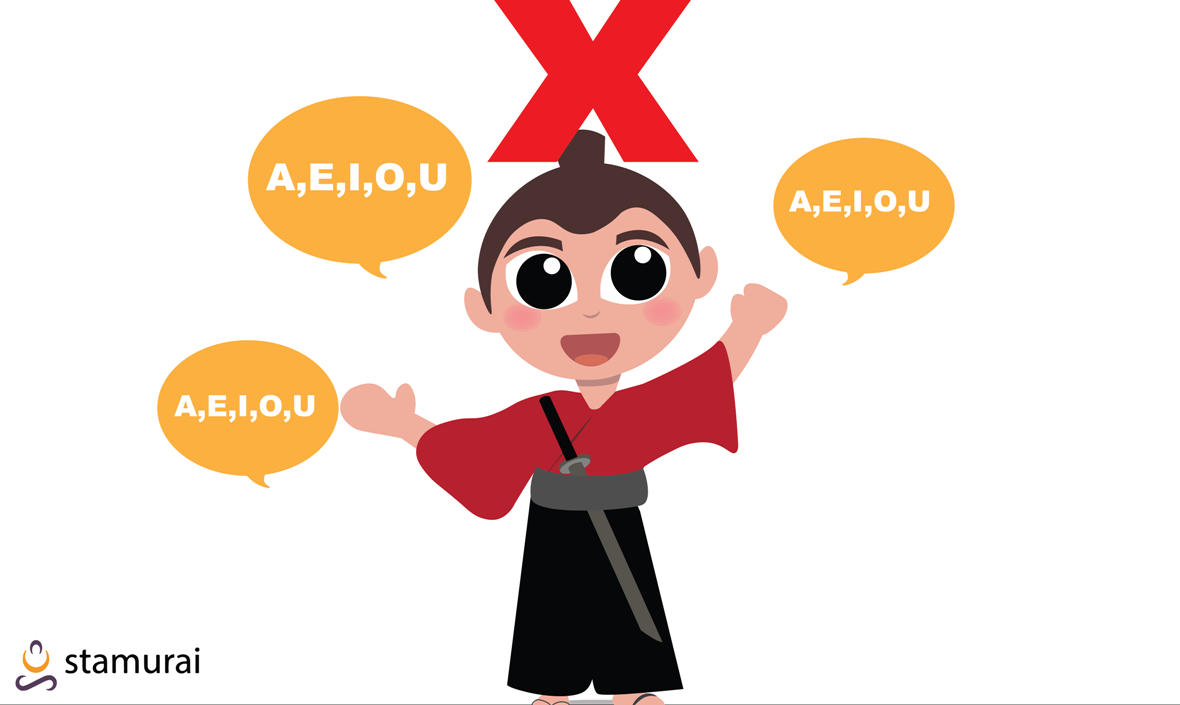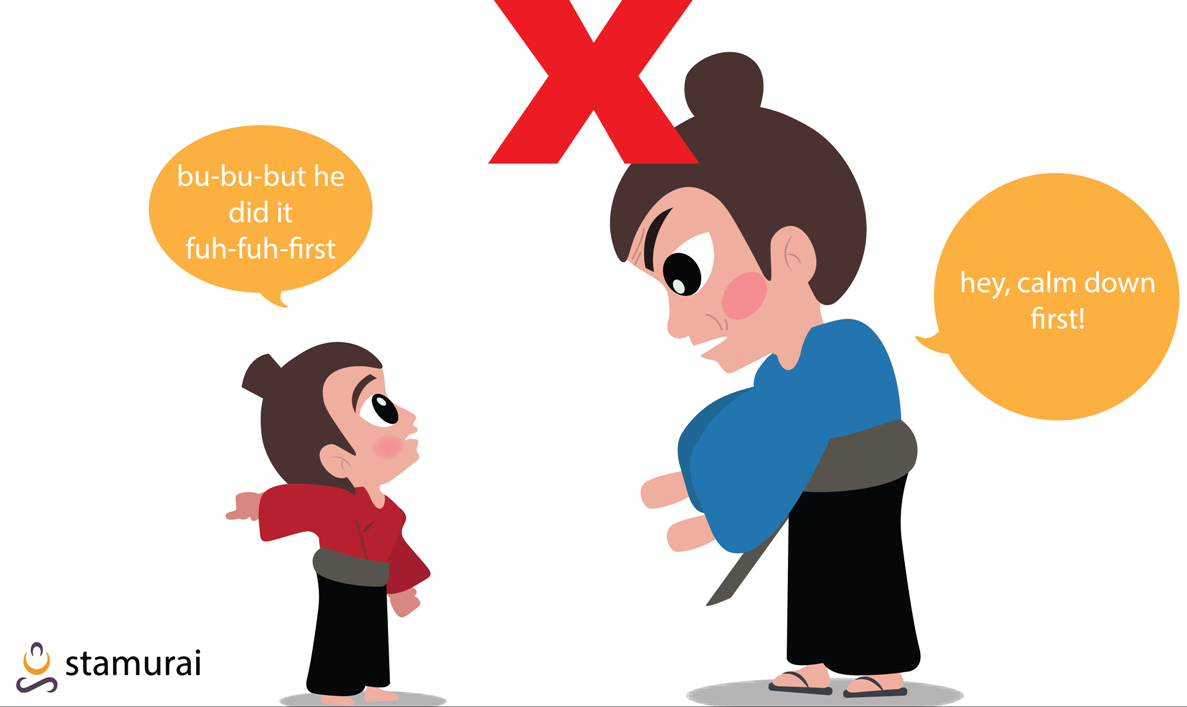Stuttering is a childhood-onset fluency disorder that is NOT caused by the weakness of facial muscles. So, how can exercises aimed at strengthening facial muscles be beneficial for a child who stutters?
Certain exercises for reducing stuttering may be counterproductive; the more a child tries to push through a particularly rough stutter, the worse their disfluency becomes!
Actual stuttering exercises recommended by certified speech language pathologists (SLPs) and validated by research studies are quite different from traditional fitness workouts. They do not aim to strengthen muscles. A child who practices stuttering exercises appropriate for their age finds new ways to embrace and overcome their stutter.
However, some exercises do not help children who stutter. In fact, they can do more harm than good!
Exercises That Are NOT Good Stuttering Treatments
By now, you may have already learned about the stuttering exercises that help children who stutter. It is time to find out which speech exercises you must avoid while working with your kid who stutters.
1. Drinking Through a Straw
Drinking through a straw does not help with fluency. Currently, no studies corroborate the claim that using straws to drink helps with the strength and mobility of one’s tongue.

Irrespective of the material, shape, and size of the straw, you should not expect your child who stutters to benefit from this technique.
The only upside may be less of a mess for you to clean up later!
2. Jaw Strengthening Exercises
Several facial exercises and “face yoga” claim to boost speech fluency in children. These exercises target brain-tongue coordination, and jaw flexibility.
Nonetheless, unlike yoga for stuttering, these exercises may not have a profound effect on stress, anxiety, or the central nervous system (CNS).
Since stuttering is not a problem of jaw movement, tongue-lip coordination, or jaw flexibility, face yoga or jaw exercises cannot help your child with their stuttering.
3. AEIOU Technique
A preschool-aged child won't typically know what vowels are. Asking them to repeat 5-letters of the alphabet throughout the day can be both annoying and frustrating for the child.

Speech-language pathologists (SLPs) request parents to not force their young children to perform speech exercises. In fact, if your child has been stuttering severely, repeating the vowels with a stutter can compound their negative feelings about speech.
It is prudent to consult an SLP or speech therapist to know more about speech exercises appropriate for your child if they have begun stuttering recently.
4. Requesting Corrections
Very young children who stutter typically do not harbor negative emotions and attitudes towards stuttering. Primarily, because they are not unaware of how they speak. Children typically don't associate shame or embarrassment with their speech.
Repeatedly asking them to repeat after they stutter can make them conscious of their speech disfluencies. It can discourage them from talking and expressing themselves altogether.
Moreover, if they are stuttering on a particular word, asking them to repeat it may harm their self-confidence.
5. Asking Them To Slow Down
For older children and adults in speech therapy, slowing down may reduce the frequency and intensity of stuttering. However, for younger children, asking them to slow down, or take a breather every time they stutter will send a negative message.
Being interrupted each time someone stutters can be incredibly irritating and infuriating.

If your child is unusually excited and talking rapidly, instead of stopping them on their tracks and asking them to slow down, let them finish speaking. You can repeat what they said back to them calmly. Introduce more pauses in your speech and break longer words down to syllables.
Instead of asking them to slow down, make sure your speech serves as a model for your child.
6. Teaching Them Syllable-Timed Or Rhythmic Speech
Noted SLPs will tell you that syllable-timed and similar fluency-enhancing techniques are great for older children, and they are correct. However, younger children are just learning to communicate. They are still acquiring expressive language skills.
Teaching them fluency enhancing techniques such as rhythmic talking, syllable-timed speech, or reduced rate technique can hamper their natural flow of speech.
Parents can try adopting these techniques to model for their kids, but asking the kids to adopt one of these speaking techniques without the help or guidance of an SLP may not help their speech fluency.
Using a cutting-edge speech therapy app like Stamurai can help you understand what changes you need to implement to your speech.
7. Instructing Them To Avoid Words
Certain words may trigger high-intensity stuttering in kids. These may be simple words like “banana” or new and complex ones like “medicine.”
However, teaching them to avoid these problem words conveys the wrong message to the children. By instructing them to avoid problem words, you can quickly turn them into feared words.
You will also be teaching your child that stuttering is a “problem” that needs to be avoided and not faced.
Instead, each time your child stutters on such a word, try to repeat it slowly and break it down to constituent syllables for them.
8. Trying to Calm Them Down
Excitement, joy, sadness, anger, and surprise are all genuine emotions. A typically developing child should be able to feel and express the entire spectrum of emotions.
However, if your child is prone to stuttering, they may stutter more frequently when surprised, excited or angry.

Asking them to calm down at the time sends the wrong message. It may make them feel that they should not feel the emotion in question or express them. It may cause your child to withdraw.
Let them stutter through their speech. If you are unable to understand a part of it, you may request them to repeat it for you a little later.
However, if your child’s anger or agitation is about their stuttering, you should consult an SLP and a child psychologist or behaviorist immediately.
What Should You Do If Your Child Begins Stuttering?
Stuttering in preschool-aged children is common. The incidence of stuttering in preschoolers may be as high as 11%. However, more than 75% of them recover on their own.
As a result, SLPs do not recommend direct speech therapy or at-home speech exercises for children who have just begun stuttering.
According to stalwarts of speech pathology like Barry Guitar, the early treatment of stuttering in younger preschool-aged children should be indirect. Direct treatment such as the speech exercises discussed aims at changing their speech.
Children between the ages of 2 and 3.5 years who have just begun stuttering may benefit from the involvement of their parents and caregivers in their therapy. The clinician should counsel the parents, who can then monitor the progress of the child.
If your child is younger than 3.5 years, try to encourage interaction and communication at home. Refrain from teaching them speech exercises or trying at-home tricks that claim to reduce stuttering.
If you have a history of stuttering in your family, speak to a speech-language pathologist. Ensure that they have the experience of dealing with stuttering in preschool-aged children.










